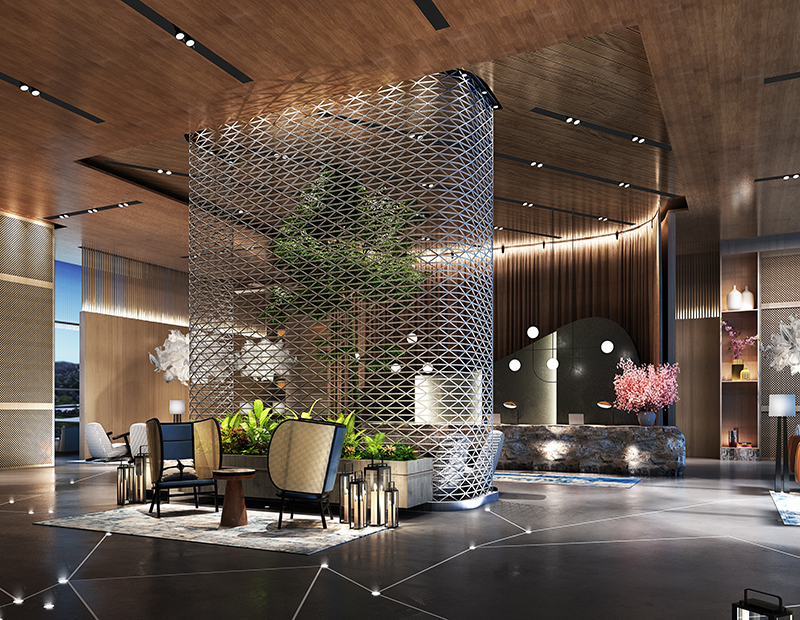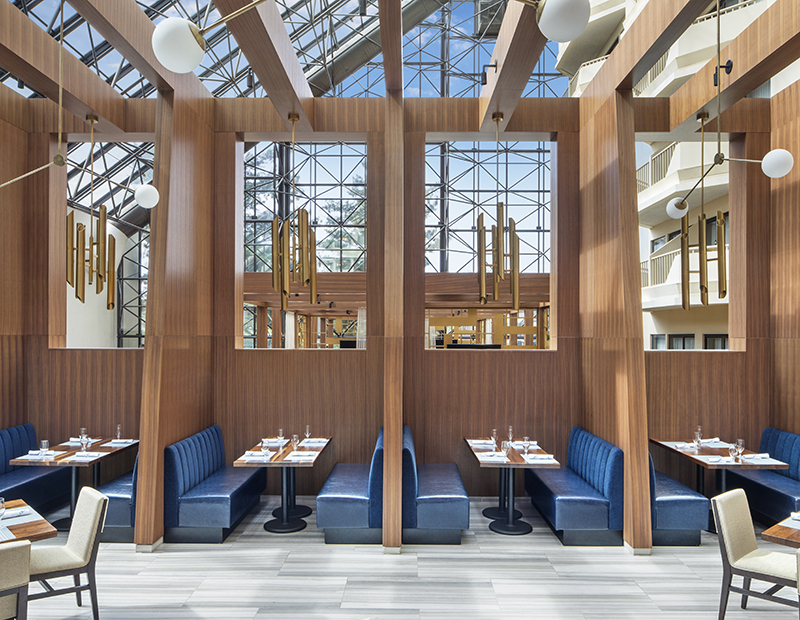Rethinking Hotels for a Post-Pandemic Scenario
Leo A Daly’s white paper explores reimagining hotel properties to meet the demands of post-COVID-19 conditions.
The hotel industry was one of the first real estate sectors visibly affected by the coronavirus outbreak. The situation became increasingly devastating, as stay-at-home orders were implemented to help stop the virus from spreading. The demand for hotel guestrooms nearly vanished. The occupancy rate dropped to almost 20 percent in early April, lowering the RevPAR by more than 80 percent year-over-year, according to Marcus & Millichap. Although now lockdowns and travel restrictions have eased across the country and the globe, travelers are still cautious and 47 percent of Americans have no plans to travel in the remainder of 2020, according to the U.S. Travel Association.
In a post-COVID-19 world, travelers will be more aware of germs and the routes of infectious transmissions. To restore trust, hoteliers and designers need to create “new properties and reimagine existing ones to support the safety and well-being of guests,” as stated in architecture and design firm Leo A Daly’s white paper The New Guest Journey. The paper analyses the guest journey from the airport to the guestroom and identifies the most critical points that need to be addressed and reinvented for a safer and more confident traveler experience.
Identifying touchpoints
With heightened awareness of germs and viruses, cleanliness will no longer be defined by seemingly spotless surfaces. Guests need to be reassured that hotels are devoting extra effort to creating an environment that focuses on health and well-being first. A hotel that is concentrated on reducing the transmission of infectious diseases needs to keep in mind each step of the guest journey.
At the hotel, the guest might encounter a porter, front desk clerk, concierge and other guests. Touchpoints can be doors, door handles, elevator buttons, lobby amenities, meeting spaces and food and beverage options. In the guestroom, everything can be considered a touchpoint, including the windows, walls, floors and surfaces, according to Leo A Daly’s paper. To build and design for a post-pandemic world, all these details need to be considered.
READ ALSO: Hospitality Design Trends: Before and After the Pandemic
Post-pandemic design solutions
Leo A Daly’s white paper points out several solutions and best practices for a post-COVID-19 world, which involves guests with an elevated awareness of germs. First, to prevent the transmission of infectious diseases it is best to identify high-risk individuals as soon as possible. To do so, hotels may consider implementing a wellness lounge, before the check-in, to screen guests for health concerns. The experience for wellness screening, however, must be seamless and nonintrusive.
Although smart technology is already highly integrated into the hotel experience, in a post-pandemic scenario it will become even more important and ubiquitous. Besides the widely used automatic door openers, mobile key cards and voice-command elevator interfaces, additional smart features will be included, such as anti-microbial, self-cleaning, non-porous and dust-free furniture and fixtures. Room service robots and electronic baggage handling might also become more popular, the paper suggests.
READ ALSO: Building Design Shifts Toward Wellness Architecture
Another key point in ensuring safety and sanitation is creating cleaner air and more space. Implementing high-performance air handling systems will force designers to rethink the standard features of hotel design. For example, floor-to-floor heights and mechanical room size may need to be increased, guestrooms may use certain features from the healthcare space and the traditional building envelope might also require changes if ventilation is to be increased through operable windows.
Developers will also have to reconsider their approach to hotel projects, instead of maximizing square footage, floor area ratio and the number of units, the new focus may shift to “wellness-ratio”. Event spaces and meeting rooms will need to be redesigned for smaller groups and with social distancing in mind, with air filtration and UVC lighting.









You must be logged in to post a comment.